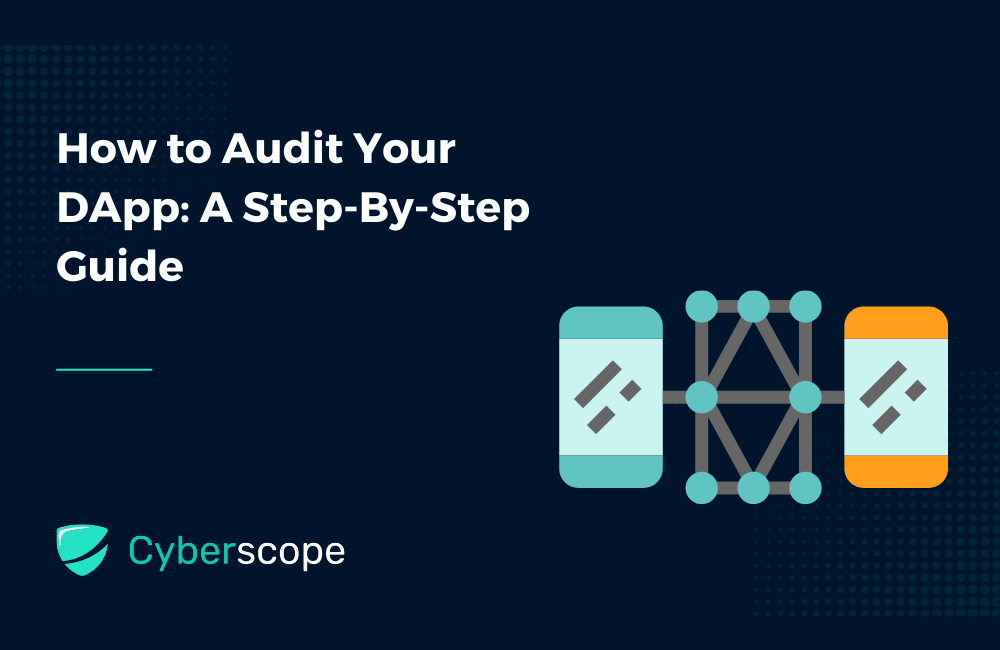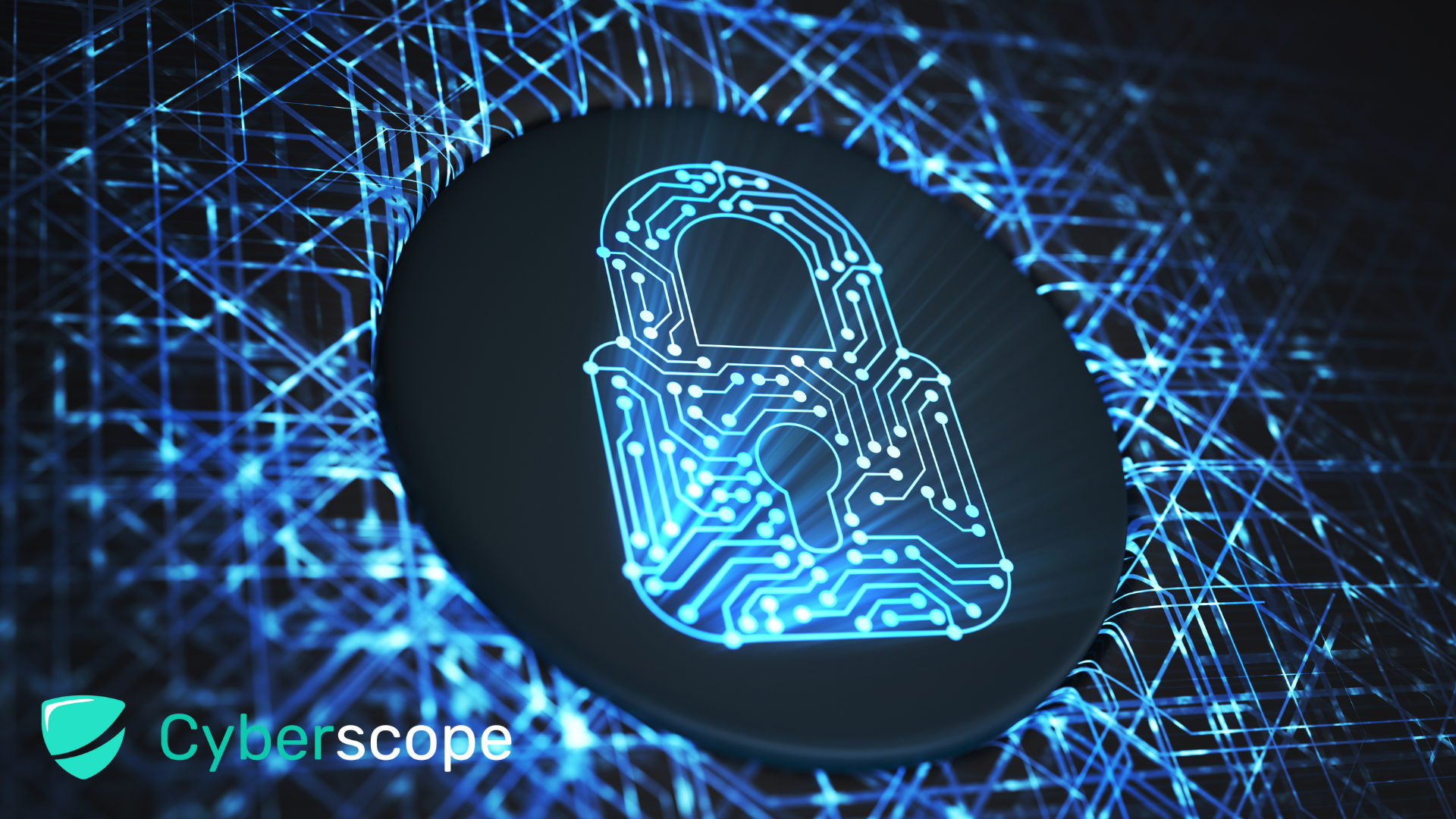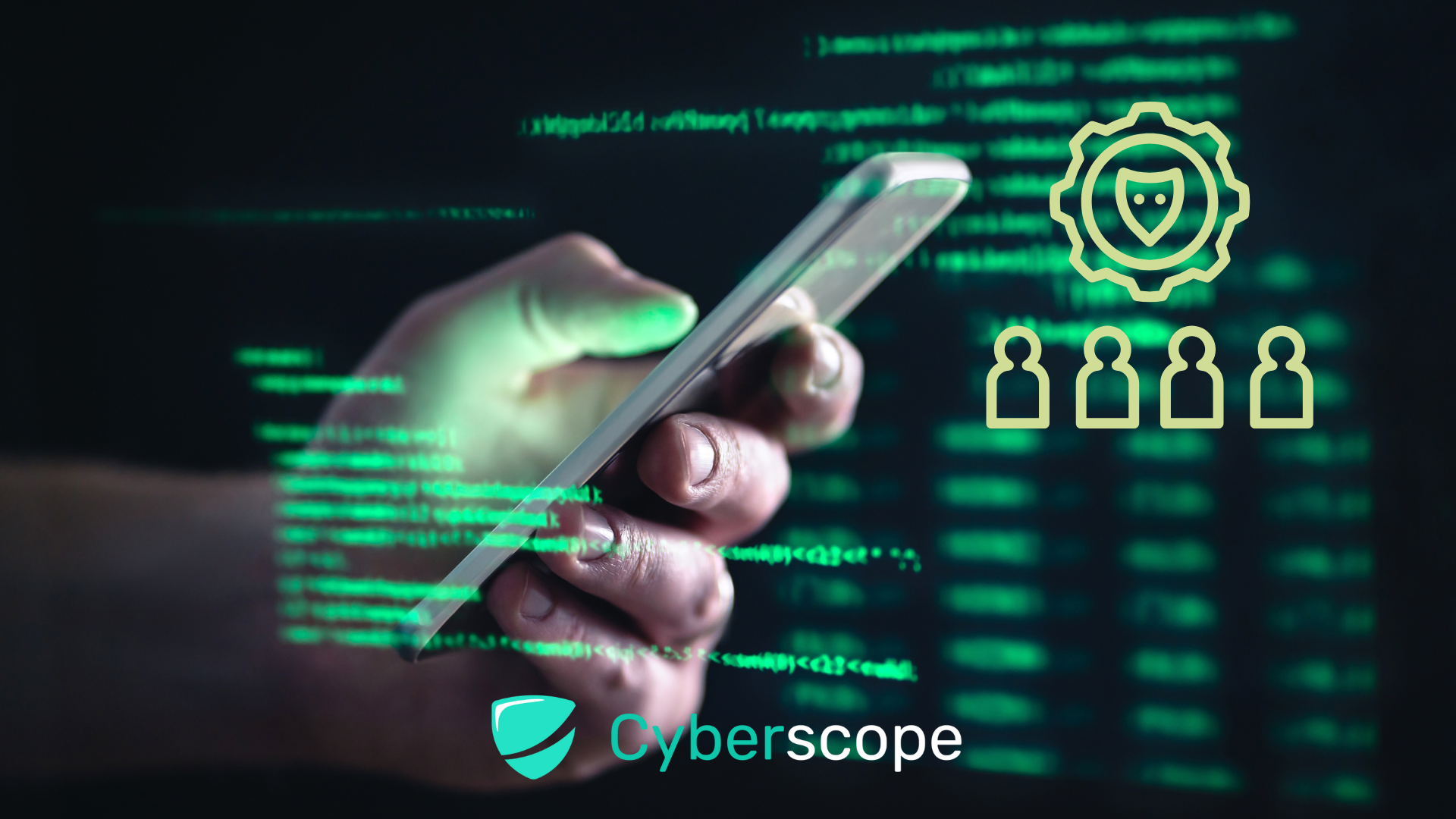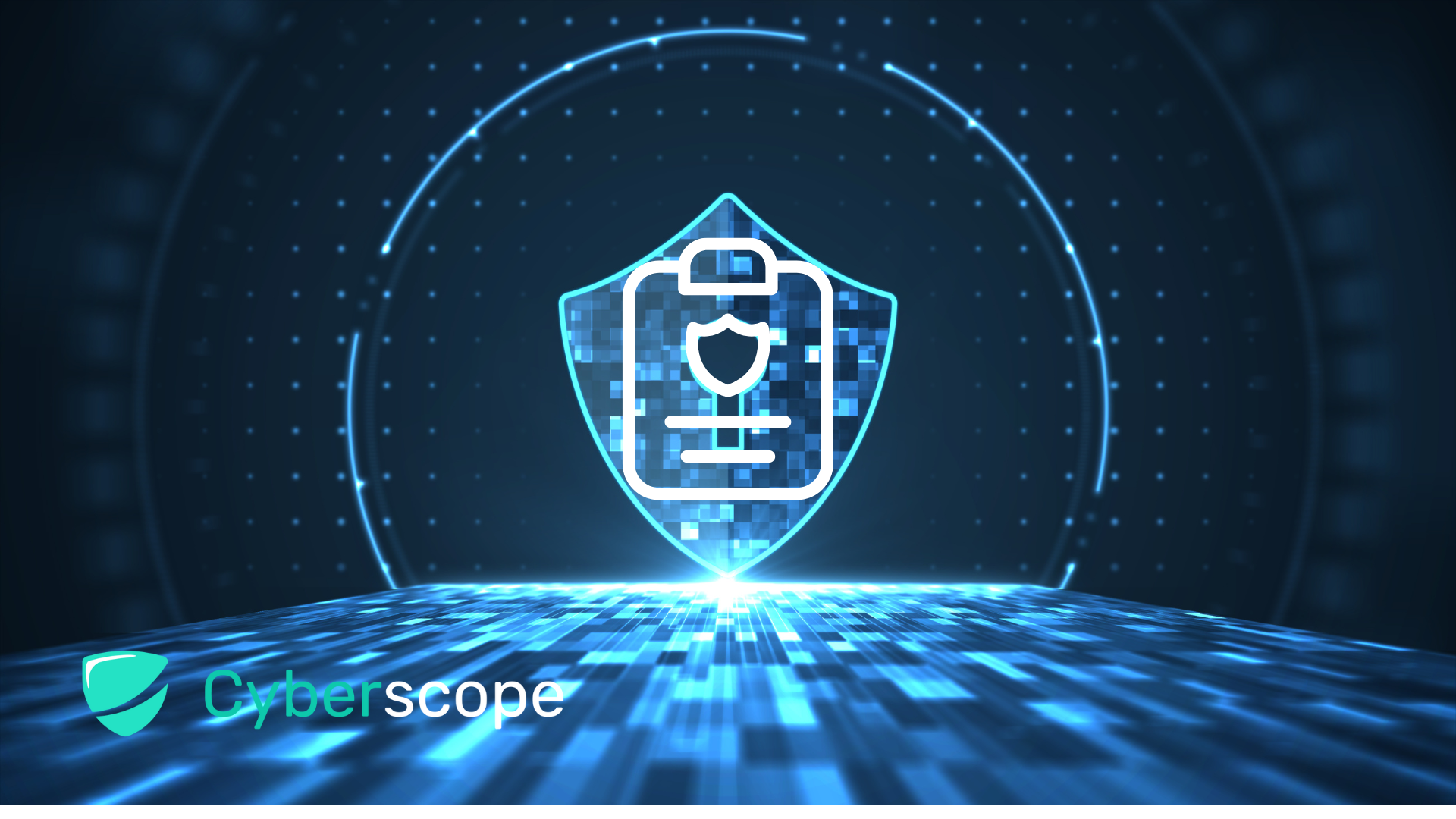.jpg%3Falt%3Dmedia&w=640&q=75)

How to Audit Your DApp - A Step-By-Step Guide

Introduction
Decentralized apps (DApps) are gaining popularity as a result of the several advantages they provide to users, including transparency, security, and immutability. DApps may, however, include flaws and faults that attackers might take advantage of, resulting in the theft of user dollars or private information, just like any other software program. To verify your DApp’s security and functioning, you must properly audit it before making it available to the general public. We will outline a step-by-step process for auditing and securing your DApp in this article.
Step 1. Specify Your Goals
The first step in performing an effective DApp security audit is defining your goals. You must be clear about the objectives of the audit and your primary security worries with reference to your DApp. Your goals should be clear, quantifiable, doable, pertinent, and time-bound. This will keep you on task and guarantee that you pay close attention to every important detail. Your goals may, for instance, be the following:

How to Audit Your DApp to Identify Vulnerabilities in the Smart Contract Code
Identifying vulnerabilities in the smart contract code is a critical aspect of a DApp audit. The goal is to pinpoint any potential security lapses, monetary losses, or reputational harm that could occur due to vulnerabilities in the code. During the audit, the auditor carefully examines the code, searching for any weaknesses that attackers could exploit. Recommendations on how to mitigate or fix any vulnerabilities found are also provided.
How to Assess the Security of Your DApp’s Architecture and Design
Assessing the security of the DApp’s architecture and design is another key objective of a DApp audit. The auditor scrutinizes the underlying architecture, data storage, communication protocols, access control methods, and other security-related components to evaluate the DApp’s overall security posture. This helps to ensure that the DApp is developed securely and adheres to industry best practices.
How to Evaluate the Effectiveness of the Security Precautions in Place for Your DApp
How to Evaluate the Effectiveness of the Security Precautions in Place for Your DApp
Evaluating the effectiveness of the security controls in place is also an essential objective of a DApp audit. The auditor assesses the effectiveness of encryption, access control, and authentication systems used by the DApp as security measures. The purpose is to determine if these controls offer sufficient protection against various types of attacks. If necessary, the auditor provides recommendations for improvement.
Validating Conformity to Industry Standards and Best Practices
Another important objective of DApp audits is to confirm compliance with best practices and industry standards. The auditor evaluates if the DApp follows secure development best practices and complies with recognized industry standards like OWASP and NIST. This helps to verify that the DApp complies with industry security requirements and is reliable in the eyes of consumers.
Making Recommendations to Strengthen the Security of the DApp
DApp auditing seeks to improve DApp security by offering recommendations. The auditor makes suggestions for enhancing the DApp’s security posture based on the audit’s findings. This includes advising on how to address any flaws or vulnerabilities found in the code or design and suggesting other security measures that might be put in place to further improve the DApp’s security.

Step 2: Choosing an Audit Team
Selecting the appropriate audit team is essential for your decentralized application (DApp) audit. The audit team should be made up of experts on blockchain technology, smart contract security, and DApp development.
Why is DApp development expertise important?
The process of creating a DApp is intricate and necessitates a thorough knowledge of the underlying blockchain technology. The audit team should be made up of experts in the particular blockchain network on which your DApp is based. They ought to be aware of how the network functions and how your DApp communicates with it.
The staff should also be well-versed in the coding languages that were utilized to create your DApp. The team should be skilled in Solidity, the programming language used to create smart contracts on the Ethereum network, for instance, if your DApp is constructed on that platform. When auditing the smart contracts that run your DApp, this information is essential.
Why is Smart Contract Security Experience Important?
Smart contracts, automatically enforce the terms and conditions of a two-party agreement. These are essential parts of every DApp, but they may also be attacked. Your smart contracts may have security holes that an audit team with knowledge of smart contract security will be able to spot and provide remedies for.
Reentrancy attacks, integer overflows and underflows, and unauthorized access to contract variables are examples of common security flaws that an audit team could search for. The team should be able to properly assess your smart contracts and spot any possible security flaws using both automated tools and manual review procedures.
Why is Blockchain Technology Knowledge Important?
The audit team should also be well-versed in blockchain technology in general. This includes being familiar with cryptographic protocols, consensus mechanisms, and blockchain architecture. Understanding how your DApp interacts with the blockchain network and how it may be protected requires this knowledge.
Making the Best Audit Team Selection
To be sure that the audit team you choose has the qualifications to do an in-depth audit, verify their references and prior employment history. Consider their amount of experience and subject-matter knowledge in your particular business as well.
In addition, selecting a company that has expertise in auditing DApps and smart contracts is crucial. Cyberscope is capable of providing all the necessary resources for this task, as our team has prior experience with similar projects and a reputable reputation within the blockchain community.
Step 3: Audit the Smart Contracts
It is crucial to audit smart contracts in order to find and address any possible security flaws. The process of auditing a smart contract is examining the code to find any flaws or vulnerabilities that an attacker may use against it. This stage is essential since smart contract flaws can be exploited by scammers, leading to the theft of money, the loss of confidential data, or the interruption of the DApp’s operation.
While auditing smart contracts, developers should look for a number of typical problems. They consist of:
Reentrancy Attacks
Reentrancy attacks take place when a hacker repeatedly enters and departs a smart contract, taking advantage of the contract’s weakness to get access to and steal money or information. Developers should make sure that their smart contracts employ appropriate locking techniques to prevent concurrent access to crucial functionalities to avoid reentrancy attacks.
Integer Overflows/Underflows
When an integer value exceeds its upper or lower bound, this is known as an integer overflow or underflow and can lead to unexpected behavior or security flaws. To prevent these kinds of problems, developers should make sure that their smart contracts handle integer values correctly.

Unauthorized Access to Contract Variables
When an attacker gains access to information they shouldn’t have, they are able to access contract variables without authorization. To avoid unwanted access to sensitive data, developers should ensure that their smart contracts implement appropriate access control measures.
Developers should make use of both automatic technologies and manual evaluations to carry out a complete audit of smart contracts. By doing static analysis on the code of the smart contract, automated tools like Mythril, Slither, and Oyente can assist in locating possible vulnerabilities and security problems.
Step 4: Test the DApp
To make sure the DApp works as planned and that all transactions are handled properly, testing is a crucial step in the development process. The following steps will help you test your DApp effectively:
- Utilize automated testing tools: Programs like Ganache and Truffle can assist with transaction simulation and vulnerability testing. You may save time and dollars by using these tools to uncover any problems early in the development process.
- Perform manual testing: Automated testing may not always be able to detect potential problems such as user experience issues, security issues, or other issues. To make sure that the DApp can handle various scenarios, it’s crucial to test it in various situations, such as high traffic or sluggish network speeds.
- Verify each feature: To make sure your DApp’s features are operating as intended, test each one. Any smart contracts, APIs, and user interfaces are included in this.
- Conduct security testing: Verify the DApp’s security and look for any vulnerabilities. Employ tools like Mythril or Oyente to search for potential security flaws in your smart contracts.
- Record test results: Record all test findings, including any flaws or problems that were found. Before starting the DApp, this documentation may be used to monitor progress and make sure that all problems have been fixed.
Overall, testing is a crucial step in the creation of a DApp, thus it’s necessary to give it plenty of time to be properly tested before going live.
Step 5. Analyze Security Reports
It is crucial to carefully review each report and find any potential risks and vulnerabilities in the DApp when analyzing security reports produced by automated tools and the audit team. After reviewing the reports, the concerns should be ranked according to their importance and probable influence on the DApp.
It’s crucial to collaborate closely with the development team to address the issues found and retest the DApp. A thorough list of the issues found, their seriousness, and remedies should be sent to the development team. Prioritize the most important problems first, and once they are fixed, move on to the less serious ones.
Following secure coding best practices and including security in the development process are crucial when addressing the issues that have been found. Also, complete testing of the DApp is advised to make sure that any concerns found have been resolved and that no new vulnerabilities have been added.
Throughout the process, working together with the development team can assist in making sure that any problems are resolved quickly and effectively. In order to keep stakeholders, such as project managers, auditors, and users, updated on the status of the DApp’s security enhancements, it is also crucial to convey progress on a frequent basis.
Step 6. Completion of the Audit Report
Making sure the audit report is thorough and organized is crucial during Step 6 of the DApp auditing process. The audit’s findings, including any problems or vulnerabilities found, should be properly outlined in the report. It should also include suggestions for enhancing the DApp’s functionality and security, which have to be ranked according to their seriousness.
The report should explain each issue’s specific actions for mitigation in addition to describing the concerns and their severity. This may involve suggestions for adding new security features, upgrading current ones, or altering the architecture of the DApp. To guarantee that the DApp is trustworthy and safe, the report should also include explicit instructions on how to put each piece of advice into practice.
The report should also include a stamp of approval or a certificate of completion. Demonstrating that the DApp has been audited and complies with the necessary standards, can assist to increase confidence among users and stakeholders. This serves as proof of the security and dependability of the DApp, which might be useful when looking for outside financing or collaborations.
The DApp auditing process has six steps, and step six is crucial to assuring the security and dependability of the DApp. The DApp can be made more dependable and secure by conducting a thorough audit and producing an extensive report that details any problems and offers suggestions for improvement. Building user and stakeholder trust by including a completion certificate or stamp of approval can also assist to demonstrate the security and dependability of the DApp.

Conclusion
As a result, auditing your DApp is an essential step in guaranteeing its efficiency, dependability, and security. If you don’t have the knowledge or means to perform an audit internally, think about hiring a reputable auditing company like Cyberscope. You can find and fix any vulnerabilities in your DApp’s code, design, and architecture before releasing it to the blockchain by following the step-by-step instructions provided in this article and using the experience of the professional team of Cyberscope. To maintain the highest levels of quality and security for your DApp, which can eventually increase user confidence and acceptance in the blockchain ecosystem, conducting routine audits is also advised.
Recent Posts
.jpg%3Falt%3Dmedia&w=640&q=75)


What is a Fallback Attack in Smart Contracts?
5 months ago
